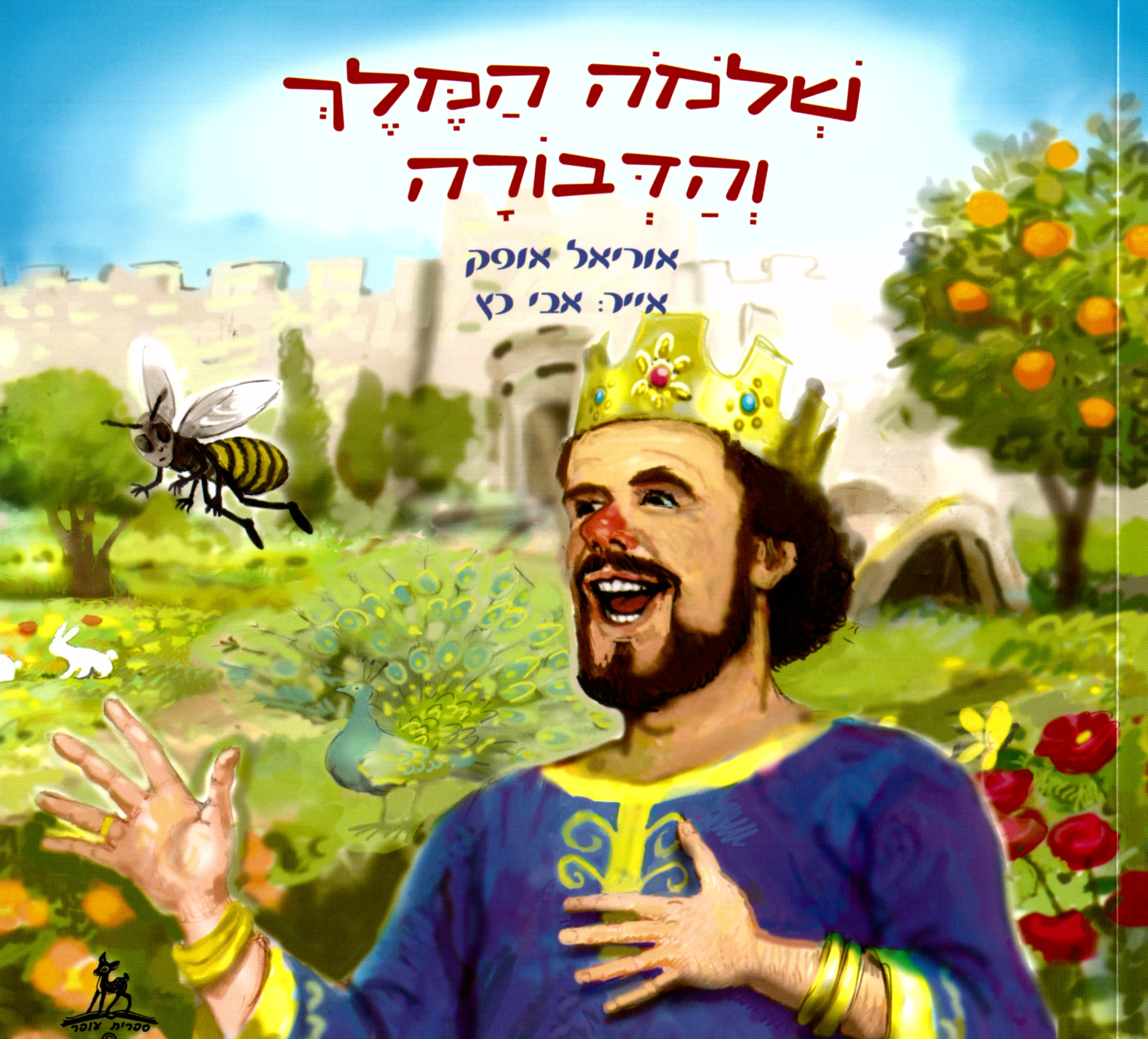שלמה המלך והדבורה
אוריאל אופק
תרגום לרוסית של ההצעות להורים המודפסות בעמודים הראשונים של הספר
Царь Соломон и пчела
Уриэль Офек
Дорогие родители!
Маленькая пчела ужалила царя Соломона в нос. Нос покраснел, царь разгневался, но пчеле удалось убедить его отпустить ее: «Придет день, и я отплачу тебе добром за добро». Прошло немного времени, и царица Савская прибыла во дворец царя Соломона, чтобы проверить его мудрость с помощью загадок (Малахим 1, 10). Это дало возможность пчеле выполнить свое обещание.
Эту любимую всеми сказку сочинил Хаим Нахман Бьялик, и она известна в разных версиях и обработках.
«Нет человека, у которого не было бы своего часа»
Пчела считается существом маленьким, слабым и незначительным. Как же она может помочь царю Соломону, самому мудрому из всех людей? Наши мудрецы, да будет благословенна их память, писали в «Поучениях отцов», глава 4, мишна 3: «Никого не презирай ….. ибо нет человека, у которого не было бы своего часа». Они учат нас ни к кому не относиться с пренебрежением, потому что для каждого может наступить время, когда он сможет сделать что-то важное. У маленькой пчелки есть особые способности, и когда приходит «ее час» - визит царицы Савской – она выполняет свое обещание и приходит на выручку царю Соломону. Это показывает нам, что каждый способен внести свой вклад согласно своим силам и способностям и независимо от своего размера или статуса.
«Кто умен? Тот, кто учится у всех»
Мудрецы эпохи Мишны так определяли умного человека: «Кто умен? Тот, кто учится у всех»."Поучения отцов " ( глава 4, мишна 1)
Царь Соломон считался самым мудрым из всех людей. Его мудрость настолько прославилась, что царица Савская приезжает, чтобы с помощью загадок проверить, насколько она глубока. В рассказе о царе Соломоне и пчеле мы видим, что даже самый умный человек может учиться у того, кто меньше его.
Проверка, которую царица Савская устроила царю Соломону, показала ему, что и он не все знает. Только маленькая пчелка может отличить искусственный цветок от настоящего. Таким образом царь Соломон понимает, что даже мудрый и великий царь не всемогущ, и что каждый может учиться у других.
Занятия в кругу семьи
Мы советуем вместе рассмотреть картинку, на которой царь Соломон отпускает пчелу. Побеседуйте с детьми и спросите их: почему он ее отпустил? Почему он смеется? Верит ли он в то, что маленькая пчела может ему помочь?
Пчела нарисована почти на всех картинках в книжке (иногда она прячется). Проследите за ней и расскажите весь рассказ с ее точки зрения: что она думает, когда видит, что «цветок», который она ужалила – это в действительности нос царя? Что она чувствует, когда люди царя ловят ее и приносят царю?
Можно представить себе «как будто» вы пчелы. Дайте своему ребенку побыть пчелой из рассказа, а сами станьте ее подружками. Вы вместе летите и жужжите друг дружке, что пчелка рассказывает о встрече с царем, и как вы к этому относитесь.
«Кто умен? Тот, кто учится у всех». Найдите в книжке место, где рассказывается, что Соломон учится у пчелы. Чему он у нее учится? Можно рассказать детям что-нибудь новое, что они не знают, а также попросить у них рассказать вам что-нибудь, что вы не знаете!
«Никого не презирай ….. ибо нет человека, у которого не было бы своего часа». Найдите картинку, на которой пчела обещает царю Соломону: «Придет день, и я отплачу тебе добром за добро». Как можно понять, что царь Соломон смеется над ней? Когда он перестает относиться к ней с презрением? Можно побеседовать с детьми о возможностях и вкладе каждого в жизнь семьи.
Вспомните вместе те случаи, когда ваши дети особенно помогли вам. Даже для маленьких «приходит час», когда они помогают и вносят свой вклад в общее дело.
Царица Савская приезжает в Иерусалим, чтобы с помощью загадок проверить мудрость царя Соломона. Знаете ли вы какие-нибудь загадки? Можно придумать загадки вместе с детьми, задать им загадки или попросить их загадать вам загадки.
Царь Соломон был царем Израиля, сыном царя Давида и Бат-Шевы. Он унаследовал царство у отца и правил около 40 лет. В это время был мир во всем государстве и сбылось предсказание: «И будет каждый сидеть
под смоковницей своей, и некого им будет бояться….» (Миха,4:4). Самое главное достижение царя Соломона – строительство Первого Храма. Он также считается самым мудрым из всех людей: «И мудрость Шломо была больше мудрости всех сынов Востока… И был он мудрее всех людей… И (славно) было имя его среди всех окрестных народов. (Малахим 1:5, 5-12)





